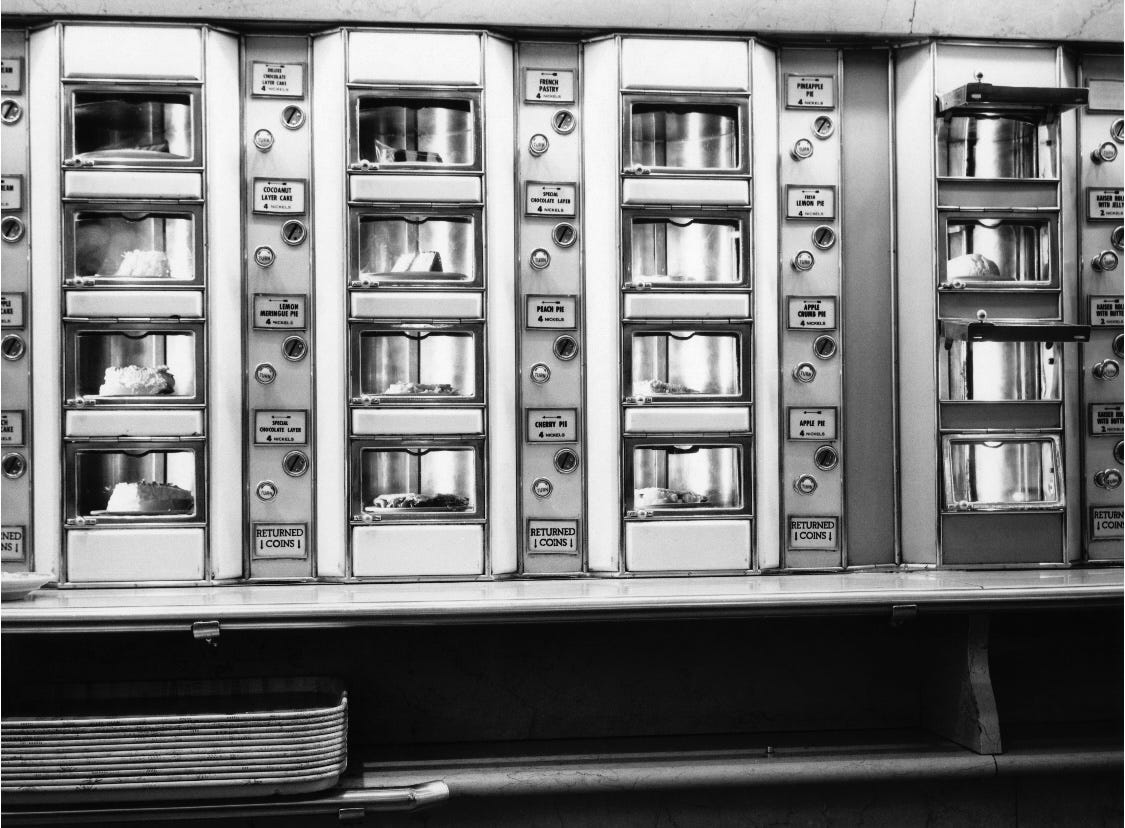
The first voice you hear in the new documentary, The Automat, is a familiar one.
Mel Brooks is on the phone with Director Lisa Hurwitz and tells her he’ll help her as much as he can with the film she’s making about the Automat. He then gives her some advice.
The big thing is the nickels, the little windows, that’s the big thing, it’s the Automat. You can drift a little to the good old times, but then you gotta concentrate on the Automat.
— Mel Brooks, from the documentary, The Automat
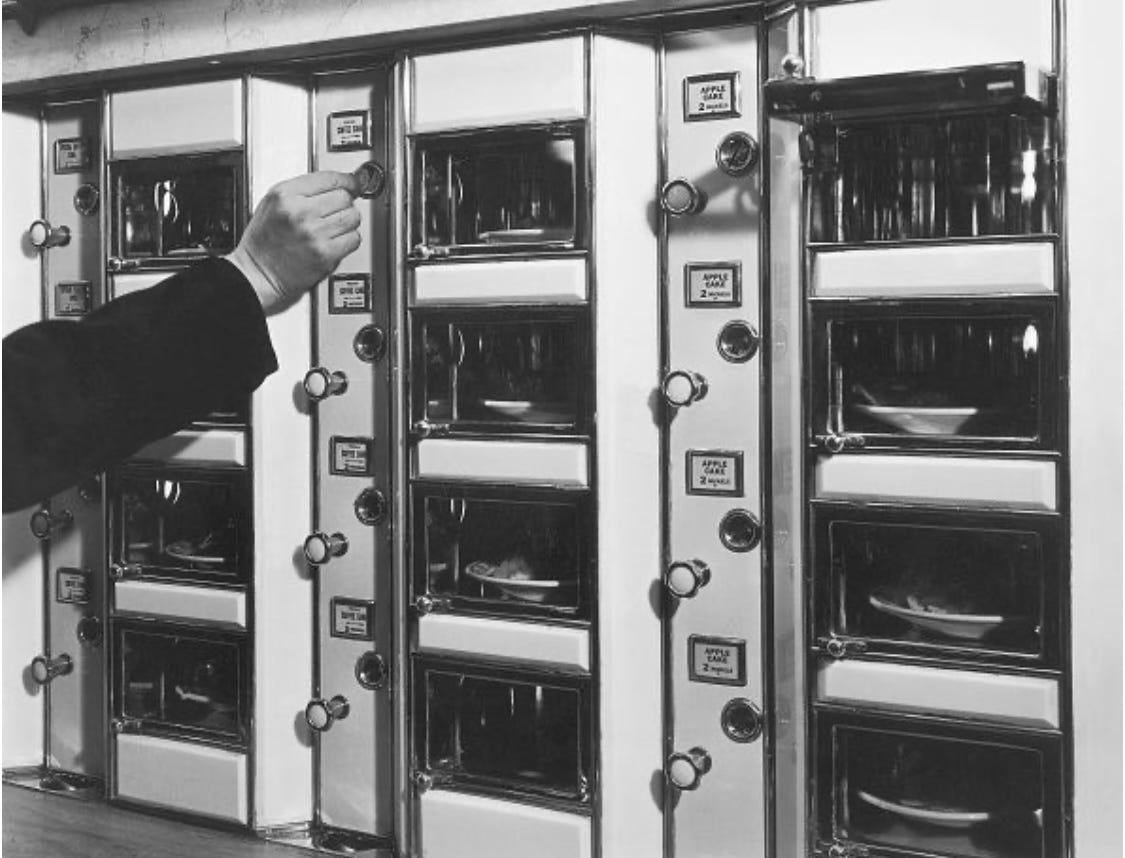
Mr. Brooks also advises Ms. Hurwitz to conduct interviews with people who knew and loved the Automat. She does, and they are wonderful.
The late Carl Reiner, Mr. Brooks great friend, recalls his breakfasts at the Automat every morning.
It’s poignant that several of those interviewed for the documentary have passed since filming, including Ruth Bader Ginsburg, Colin Powell, and John Romas, the VP of Engineering who had the sad task of closing the last remaining Automat in New York in 1991.
All praised the Automat for the quality of the food, value, the diversity, the welcoming atmosphere, the beauty of the interiors and the sense of optimism. The company policy was to serve everyone, welcome everyone and though the service was fast, the dining was not. You could linger.
A New Method of Lunching
John Horn and Frank Hardart opened the first Automat on Chestnut Street in Philadelphia in 1902. A decade later on July 2, 1912 an Automat opened in Times Square with ads heralding a “New Method of Lunching.”
Through WWI, The Great Depression and WWII, the Automat provided good food at affordable prices and continued to expand with dozens of restaurants in Philadelphia and New York.
But by the late 1950’s with the population moving out of cities and into suburbs, the popularity of the Automat began to wane.
My grandmother used to take me to the Automat near Radio City during the 1950’s when we lived on the border of Brooklyn and Queens. I remember it was big and bright and I wasn’t tall enough to reach the little doors.
In 1960, my parents bought a house on Long Island and like so many others we moved out of the city. Over the next three decades the number of Automats continued to dwindle until eventually by 1991, they were gone.
The New York Public Library had a wonderful exhibit about the Automat in 2010 and I’ve linked to it here. You’ll get a more in-depth history along with some terrific additional links to explore.
Link: The New York Public Library

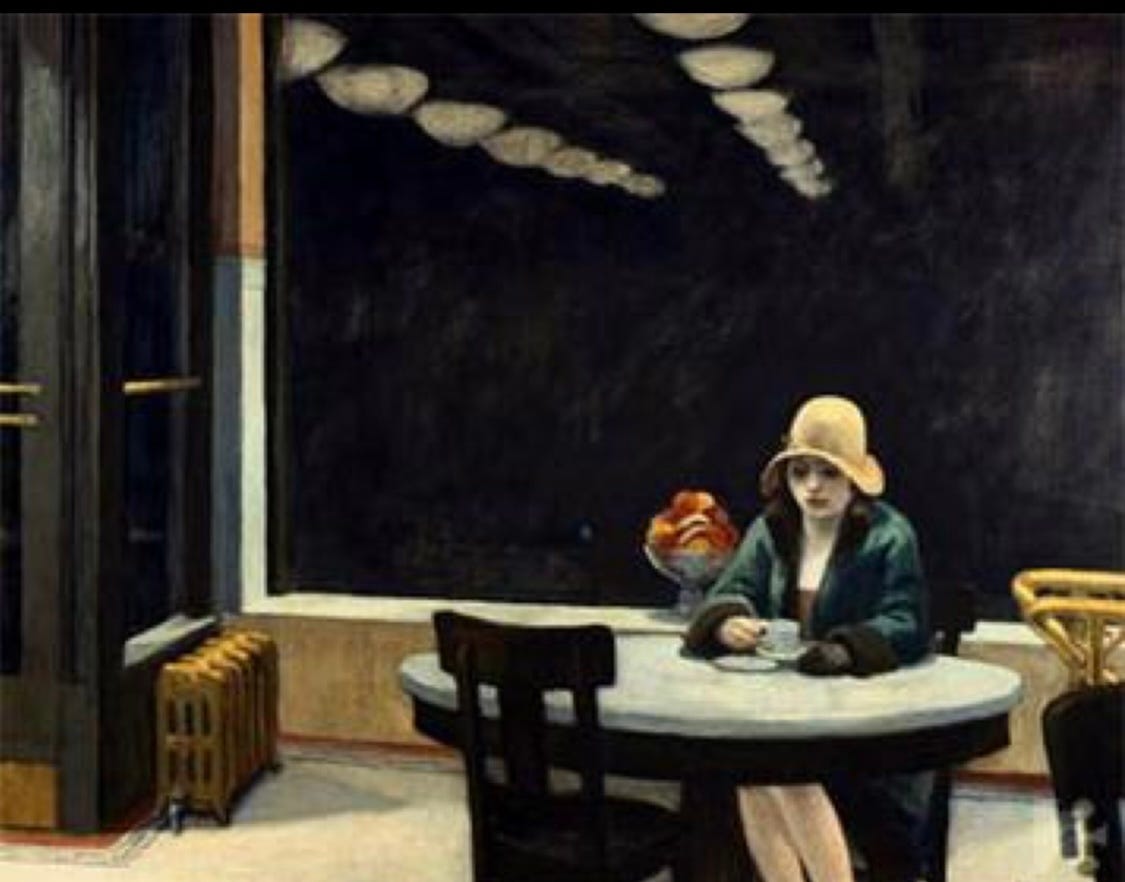
A Word About the Coffee
The nickel cups of Horn & Hardart coffee were legendary. They were dispensed from dolphin spouts that were based on fountains in Italy. Frank Hardart had worked in New Orleans and introduced French Press coffee to the New York and Philadelphia Automats and it was a sensation.
Mel Brooks told Ms. Hurwitz he would write a song about the Automat for the documentary. Not only did he write a song, he performed it with a full orchestra at the end of the film. It’s a special moment and Ms. Hurwitz has created a film that is moving and memorable.
Mr. Brooks uses the word ‘panache’ to describe what the Automat had.
At age 96, he is the keeper of stories and continues to tell them with the greatest humor and panache. Here is his song.
There is nothing like the coffee at the Automat
It’s aroma and its flavor was supreme
From a little dolphin spout, the coffee came right out,
Not to mention at the end a little spurt of cream
— Mel Brooks, from The Automat
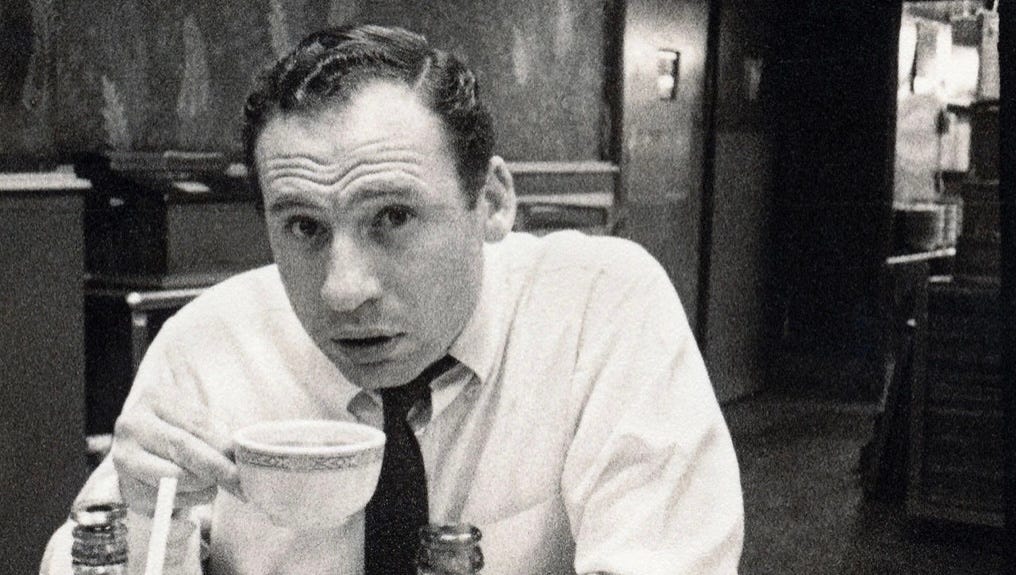
Link: IMBd The Automat
RECIPES
I’m linking here to a piece that aired on CBS Sunday Morning last November. It includes a conversation with Lisa Hurwitz along with links to recipes and other Automat related stories. I made the Cup Custard and Pumpkin Pie and my notes are below each photo. Here is the link:
CBS News Sunday Morning —The Automat: A Look Back at the Future of Dining
Cup Custard
I made the recipe early one morning this week and had custard for breakfast - why not? Eggs, milk, vanilla and sugar. It was so easy to make, smooth and creamy, and had the taste of old-fashioned custard — pure comfort food. I would definitely make this again, maybe next time with a little nutmeg on top.
Pumpkin Pie
I have to say upfront I am not the biggest fan of pumpkin pie, but it is almost Thanksgiving and the flavor of this pie is nicely and mildly spiced, not too sweet and I liked it. However, I didn’t do the best job making it. I think my oven got too hot and puffed up the pie filling and then it sank a little and the pie cracked at the edges (eggs cooked too fast/too much.) Not to worry! It tasted good - and whipped cream is not only delicious, but is like make-up for pie!
The Pie Crust
The recipe says use a 9 1/2 inch pie crust, so I called on my friend Kate McDermott, fondly known to many by her nickname, “The Piechiatrist” — she is an expert and her recipes and pies are always delicious.
I went for an all-butter crust so if you do that, use 14 tablespoons of butter (or, follow Kate’s measures of a mix of butter and leaf lard.) You will have a second crust you can freeze for later use. Here is a link to the recipe and Kate’s Substack, which is fantastic. Thanks, Kate!
The Serving Plates
I found the dishes in the photos above on eBay - six plates for twenty dollars. They are by Mayer China from 1958 and in the Marion pattern, one of the patterns used by Horn & Hardart.
It feels special to have these little pieces of Horn & Hardart Automat history in my home.
Have a great weekend, Everyone!
Jolene




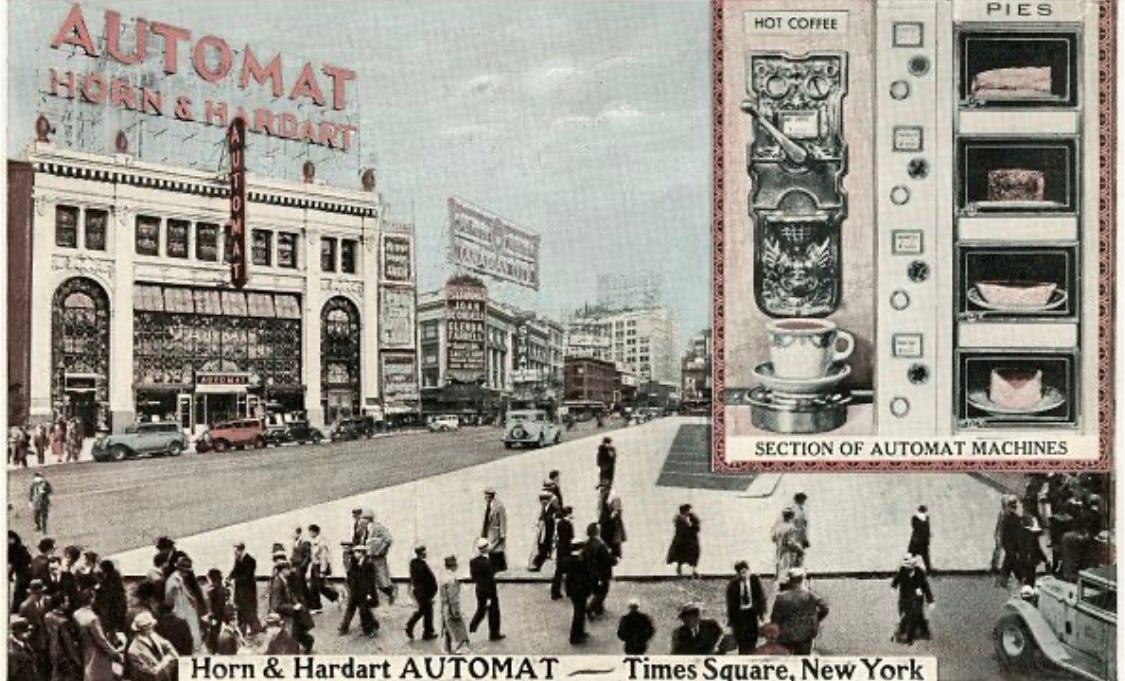
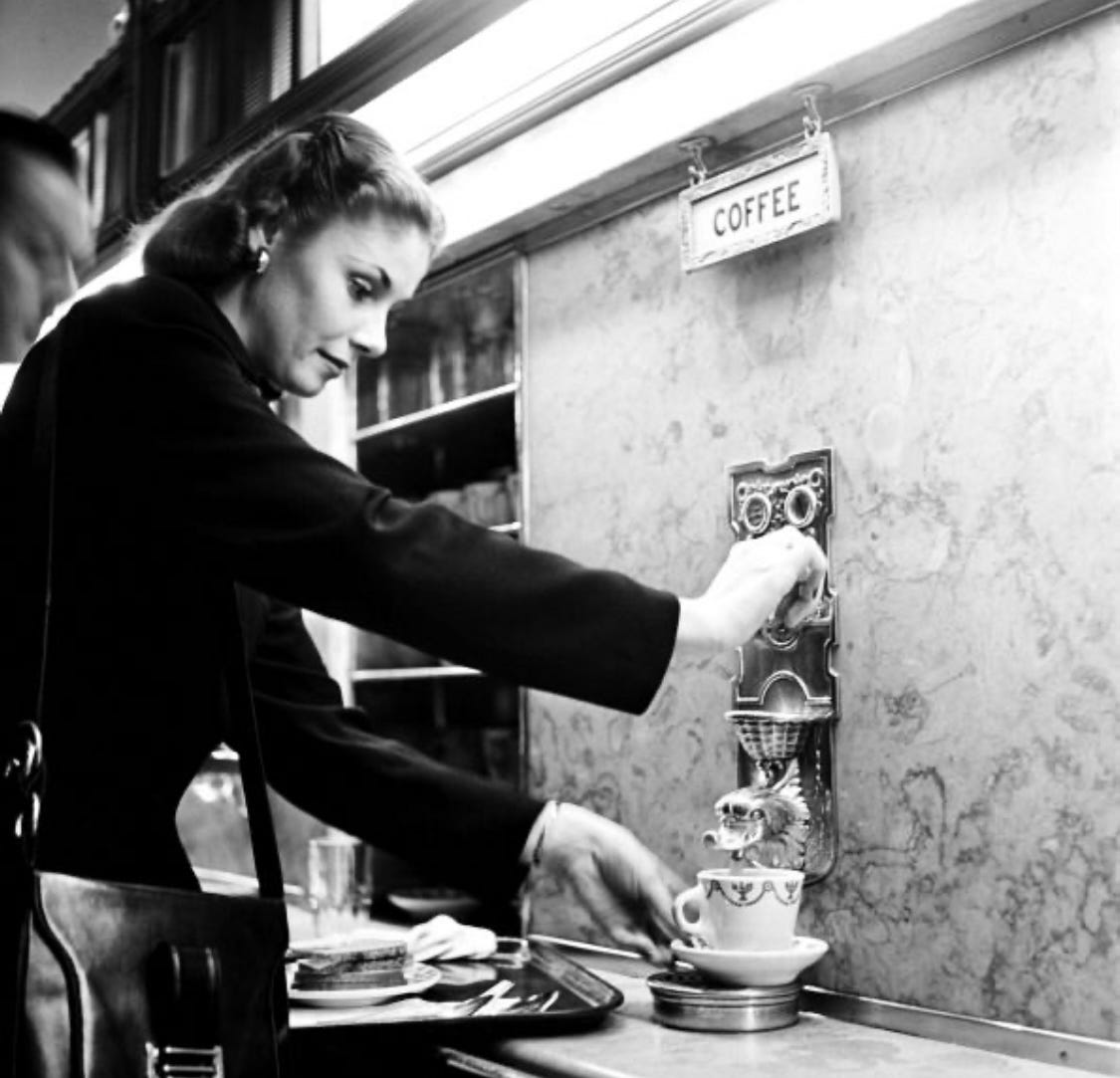
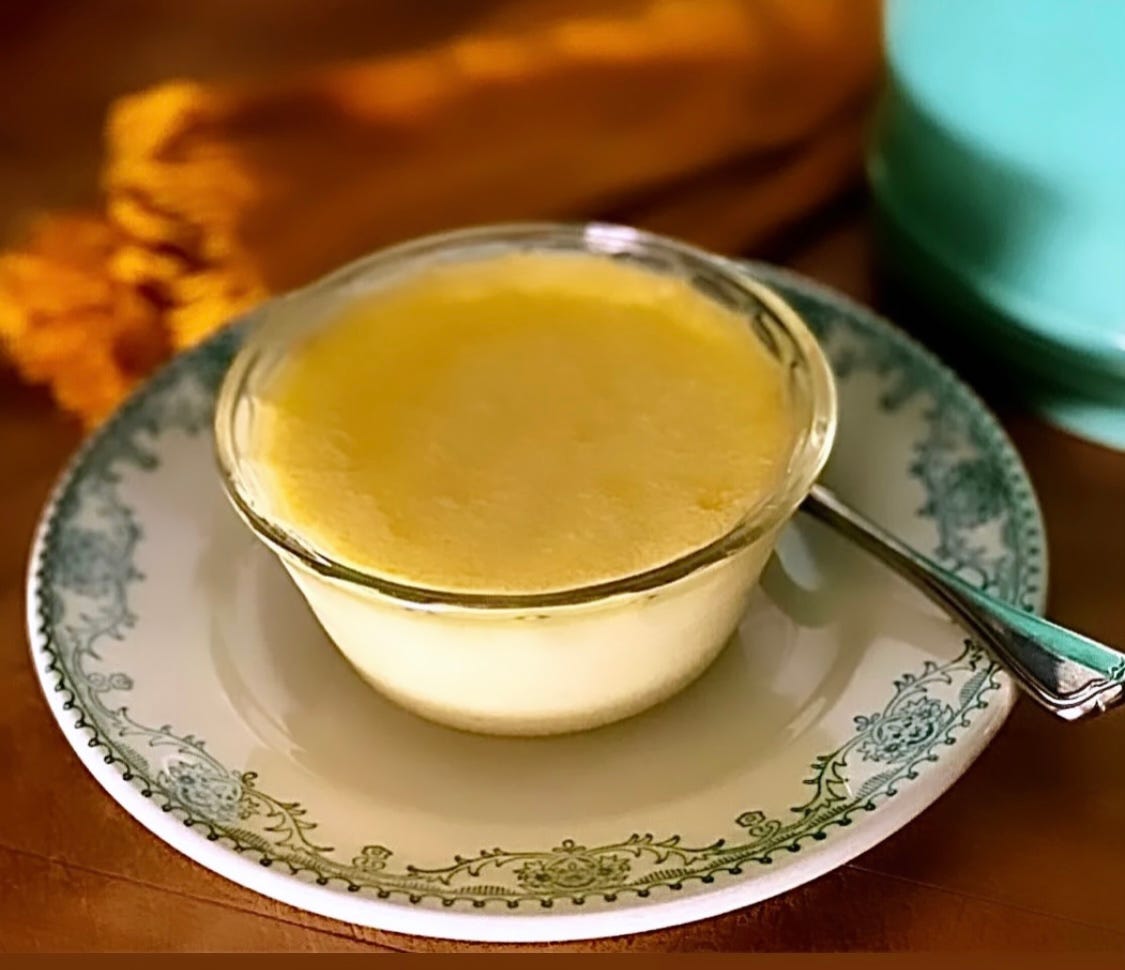
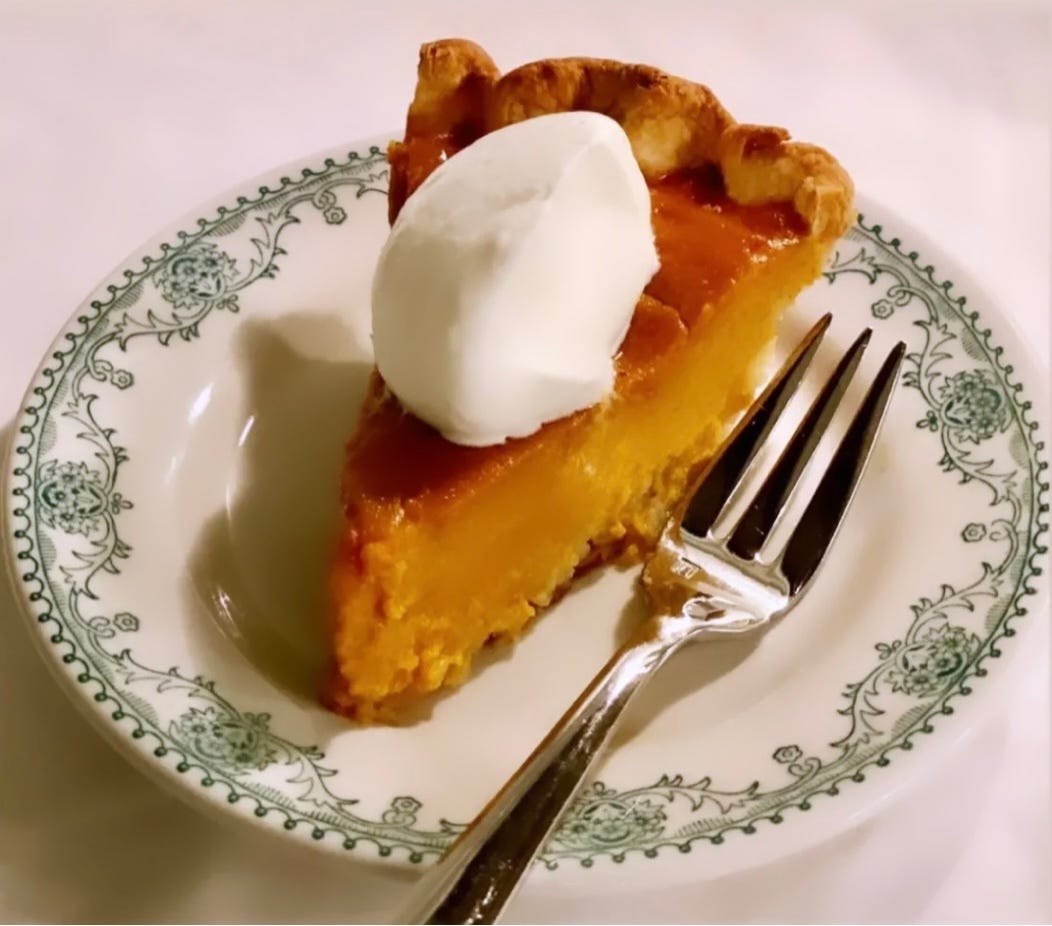
There's a great little book on the history of the Automat that I have read a couple of times, by Lorraine B. Diehl and Marianne Hardart. I'm willing to bet the food quality really was good after reading it! Thanks for adding your own memory! Maybe it's time for an Automat revival, she says optimistically?
I just watched the film. It's very well made, entertaining and informative. In a previous comment, I mentioned my misadventure with an Automat in Amsterdam, but I didn't know the Americans had actually taken the Automat idea from Europe.
What struck me the most in the film is that one of the two guys who launched the Automat empire wanted to offer his customers a warm, unforgettable kind of hospitality but they ended up going the complete opposite way: no service, everything automatic. And the funny thing is, that was the Automat's key to success because people equaled impersonal service and automatic vending machines with the modern age. Go figure.
Of course, there was much more to the Automat's success than that.